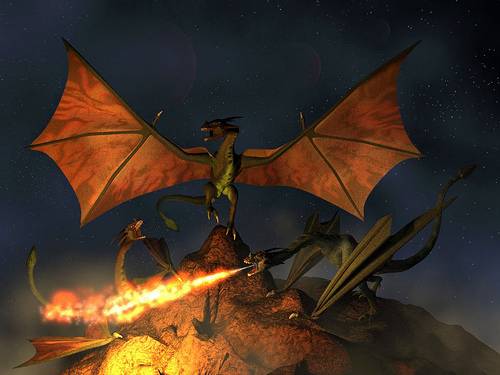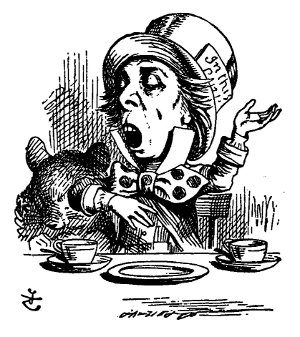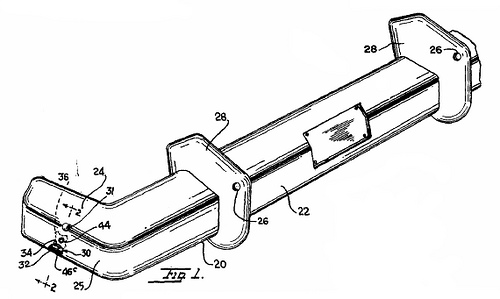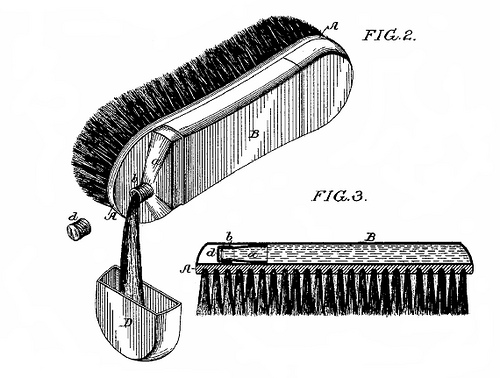
ignivomous
adj. vomiting fire

ignivomous
adj. vomiting fire

In January 1749, the Duke of Portland bet the Earl of Chesterfield that “let a man advertise the most impossible thing in the world, he will find fools enough in London to fill a play house and pay handsomely for the privilege of being there.” The earl agreed, and shortly afterward the London newspapers announced a wonderful new performer:
He presents you with a common Wine Bottle, which any of the spectators may first examine; this Bottle is placed on a Table in the middle of the Stage, and he (without any equivocation) goes into it, in the sight of all the Spectators, and sings in it; during his stay in the bottle, any Person may handle it, and see plainly that it does not exceed a common Tavern Bottle.
A crowd packed the theater on the appointed night and, when the performer failed to appear, they rioted, gutting the building. It was jokingly said afterward that perhaps the man had been corked during rehearsals.
The Cheltenham Journal actually topped this in 1825 with an advertisement for five Arabian conjurors:
[T]hey will take each a lighted torch in either hand, when lo! incredible to relate! Suckee, with the burning torches, will jump clean down Mustapha‘s throat, who in an instant, with equal dexterity, will pass down the throat of Abdallah, then Abdalluh will jump down that of Benassar, and Benassar down his brother Muley‘s; who, lastly, notwithstanding he is encumbered with his four brothers and their four torches, will throw a flip-flap-somerset down his own throat, and leave the audience in total darkness!–Probatum est.
Here again the room was crammed, but five minutes before showtime “the conjuror decamped with the money and was no more heard of,” reports William Hone. “Probably he jumped down his own throat.”
In 1936, John Steinbeck’s puppy made confetti of half the manuscript of Of Mice and Men. “I was pretty mad but the poor little fellow may have been acting critically,” he wrote to a friend. “I didn’t want to ruin a good dog for a manuscript I’m not sure is good at all.”
He redid two months’ work and decided the puppy had been right. “I’m not sure Toby didn’t know what he was doing when he ate the first draft,” he wrote. “I have promoted Toby-dog to be lieutenant-colonel in charge of literature.”

A conundrum by John F. Collins, from the August 1968 issue of Word Ways:
Just then, someone came up from behind and put his hands over the Hatter’s eyes.
‘Guess who!’ said the newcomer in a thin, flat voice.
The Hatter froze for a moment and declared, rather coldly, ‘I have no use for practical jokers.’
‘Ha! Neither have I,’ retorted the stranger, still keeping his hands over the Hatter’s eyes.
At that, the Hatter seemed to accept the challenge of the game and started asking a series of questions in a manner that mingled hope with care.
Question: ‘Ahem. Would you, by chance, be in a black suit this evening?’
Answer: ‘I would, but not by chance, by design.’
Q. ‘I presume you’re a member of all the posh clubs?’
A. ‘Afraid not. Never even been invited.’
Q. ‘Surely you’re better than average?’
A. ‘Yes, indeed!’
Q. ‘Not spotted, I hope?’
A. ‘Knock wood.’
Q. ‘Married?’
A. ‘No, happy.’
Who is behind the Mad Hatter?

Voltaire was stirring up trouble even after he died. According to a tradition in the 18th and 19th centuries, it was fatal to publish his complete works:
Over the course of 70 years, it is said, at least eight publishers went bankrupt publishing complete editions of Voltaire’s writings.
See Curse of the Ninth.

After a series of poor performances of her Broadway show The Exciters, Heywood Broun told Tallulah Bankhead:
“Don’t look now, but your show’s slipping.”
Chambers’s Journal (1872) reports the result of an unfortunate printer’s error in which two columns of type in a local newspaper were mixed together:
Several of the Rev. Dr Mudge’s friends called upon him yesterday, and after a brief conversation, the unsuspicious pig was seized by the hind-legs and slid along a beam until he reached the hot-water tank. His friends explained the object of their visit, and presented him with a very handsome gold-headed butcher, who grabbed him by the tail, swung him round, slit his throat from ear to ear, and in less than a minute, the carcass was in the water. Thereupon, he came forward, and said that there were times when the feelings overpowered one, and for that reason he would not attempt to do more than thank those around him for the manner in which such a huge animal was cut into fragments was simply astonishing. The doctor concluded his remarks, when the machine seized him, and in less time than it takes to write it, the pig was cut into fragments, and worked up into delicious sausages. The occasion will long be remembered by the doctor’s friends as one of the most delightful of their lives. The best pieces can be procured for tenpence a pound; and we are sure that those who have sat so long under his ministry will rejoice that he has been treated so handsomely!
“We cannot vouch for the genuineness of the foregoing; but whether it be genuine or manufactured, it would be difficult to find a more complete specimen of a typographical mixture.”

Above: a combination car bumper and bottle opener, patented by Rafael Bonnelly in 1964.
Below: a combination clothes brush and flask, patented by Thomas Helm in 1893.
Maybe you do have a drinking problem.

Dorothy Parker named her Boston terrier Woodrow Wilson “because he was full of shit.”

The Ohio Law Journal thus explains how to draw a deed of gift of an orange:–
‘… If a man would, according to law, give to another an orange, instead of saying, “I give you that orange,” which one would think would be what is called in legal phraseology, “an absolute conveyance of all right and title therein,” the phrase would run thus: “I give you all and singular my estate and interest, right, title and claim, and advantage of and in that orange, with all its rind, skin, juice, pulp and pips, and all right and advantage therein, with full power to bite, cut, suck, and otherwise eat the same, or give the same away, as fully and effectually as I, said A.B., am now entitled to bite, cut, suck, or otherwise eat the same orange, or give the same away with or without its rind, juice, pulp and pips, anything heretofore or hereafter, or in other deed or deeds, instrument or instruments, of what nature or kind soever, to the contrary in any wise notwithstanding.”‘
— Journal of Jurisprudence, April 1885